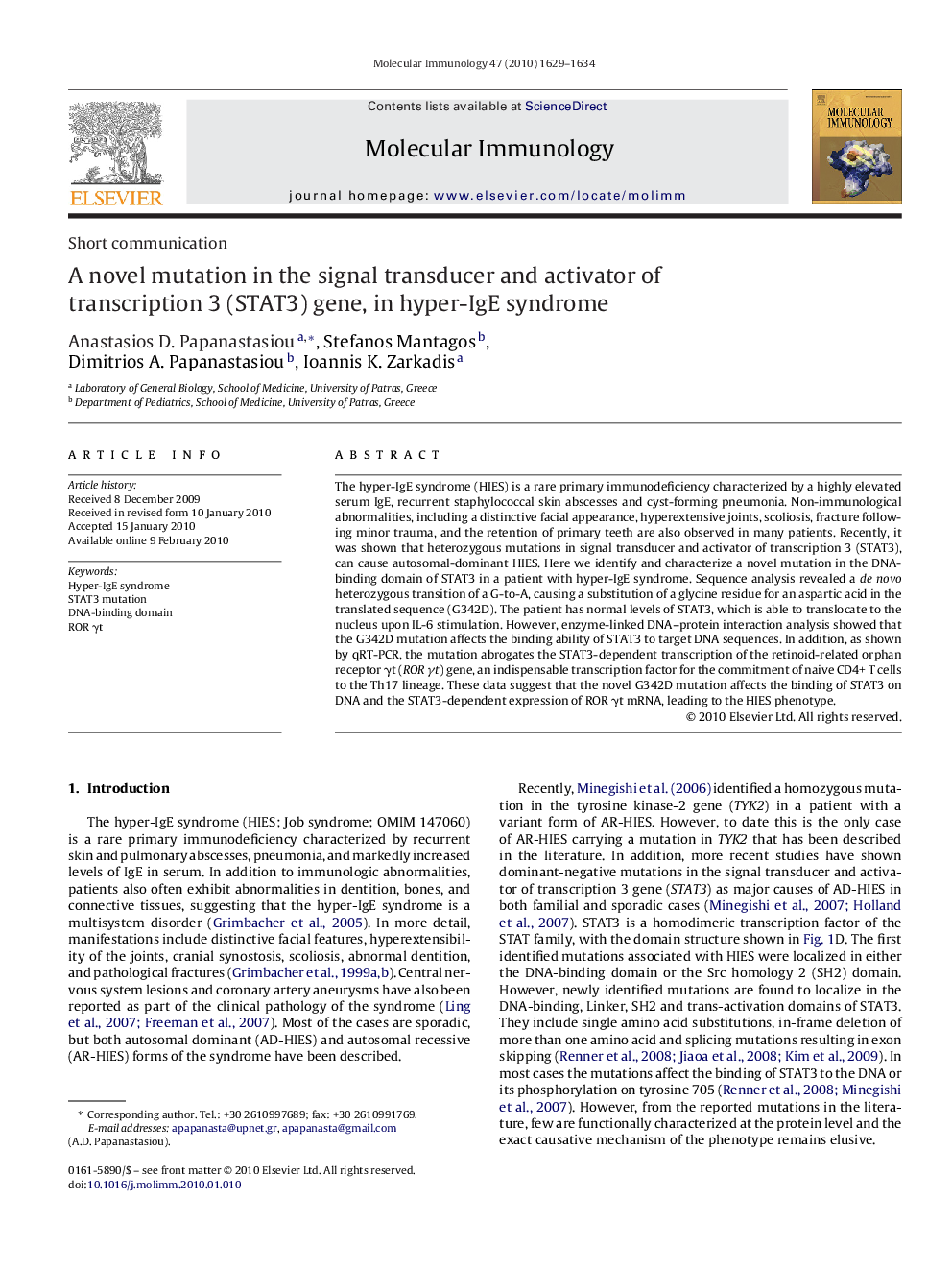| Article ID | Journal | Published Year | Pages | File Type |
|---|---|---|---|---|
| 2831752 | Molecular Immunology | 2010 | 6 Pages |
The hyper-IgE syndrome (HIES) is a rare primary immunodeficiency characterized by a highly elevated serum IgE, recurrent staphylococcal skin abscesses and cyst-forming pneumonia. Non-immunological abnormalities, including a distinctive facial appearance, hyperextensive joints, scoliosis, fracture following minor trauma, and the retention of primary teeth are also observed in many patients. Recently, it was shown that heterozygous mutations in signal transducer and activator of transcription 3 (STAT3), can cause autosomal-dominant HIES. Here we identify and characterize a novel mutation in the DNA-binding domain of STAT3 in a patient with hyper-IgE syndrome. Sequence analysis revealed a de novo heterozygous transition of a G-to-A, causing a substitution of a glycine residue for an aspartic acid in the translated sequence (G342D). The patient has normal levels of STAT3, which is able to translocate to the nucleus upon IL-6 stimulation. However, enzyme-linked DNA–protein interaction analysis showed that the G342D mutation affects the binding ability of STAT3 to target DNA sequences. In addition, as shown by qRT-PCR, the mutation abrogates the STAT3-dependent transcription of the retinoid-related orphan receptor γt (ROR γt) gene, an indispensable transcription factor for the commitment of naive CD4+ T cells to the Th17 lineage. These data suggest that the novel G342D mutation affects the binding of STAT3 on DNA and the STAT3-dependent expression of ROR γt mRNA, leading to the HIES phenotype.
